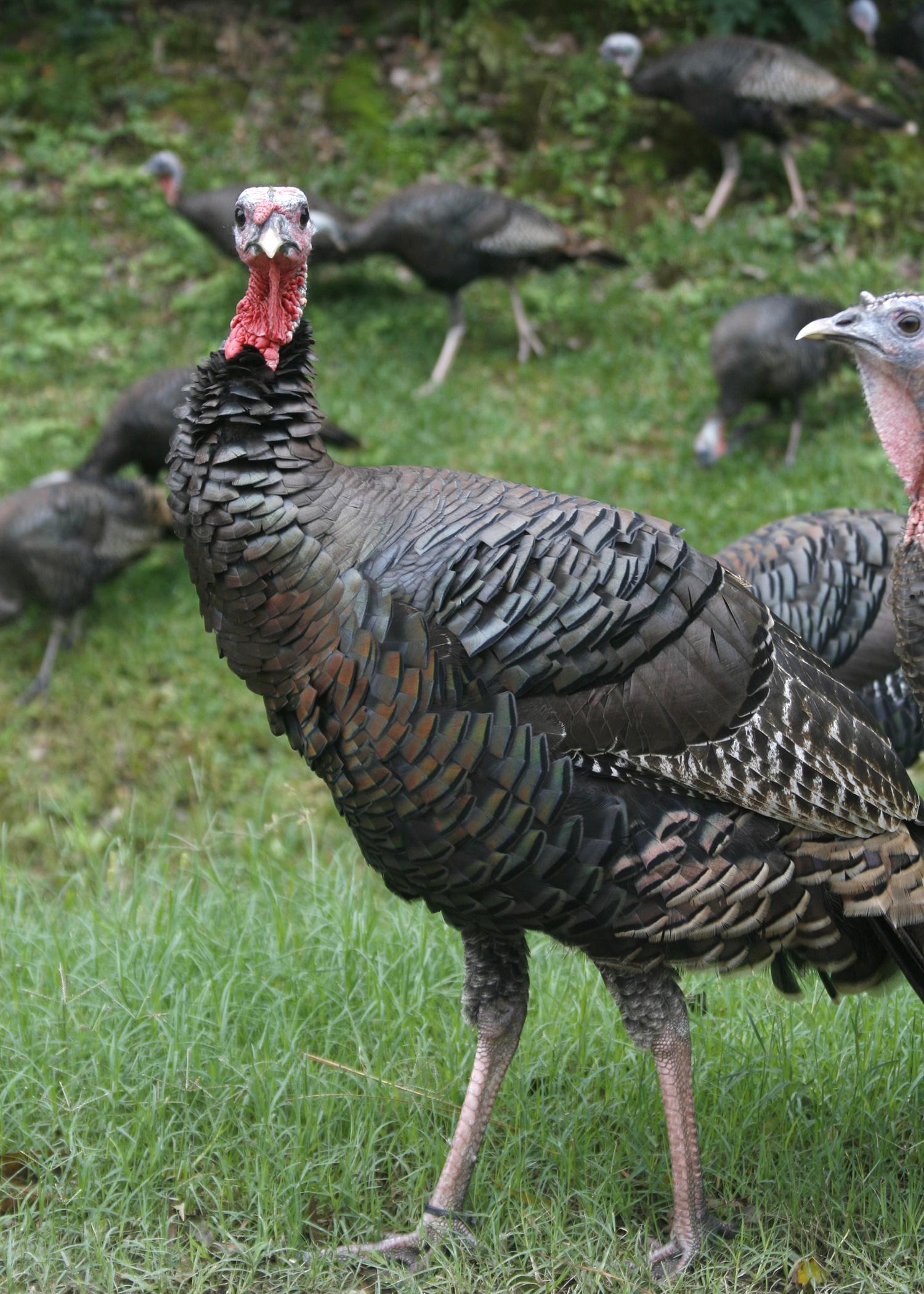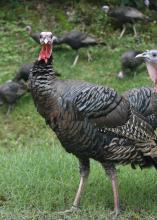Information Possibly Outdated
The information presented on this page was originally released on February 27, 2015. It may not be outdated, but please search our site for more current information. If you plan to quote or reference this information in a publication, please check with the Extension specialist or author before proceeding.
Consider safety tips for spring gobbler season
By James E. “Jim” Miller
Professor Emeritus, Department of Wildlife, Fisheries and Aquaculture
MSU Extension Service
STARKVILLE, Miss. -- With spring gobbler season quickly approaching, here are some precautions hunters need to remember before they head to the forest.
For those who use decoys, be sure to place them so they are not directly in front of you or in the direction another hunter might approach from as you are calling. If you see or hear another hunter approaching your location, forget about the urge to shoot a turkey and alert that person immediately by shouting out that you see him or her. Let the person know, in no uncertain terms, where you are located. Do not wave your hand or call like a turkey again if you see another hunter approaching where you are sitting.
A fairly new turkey hunting tactic is the idea of using a spread turkey tail fan, either real or replicated. The hunter places a handle on the tail fan and tries to use it either to slip up on a gobbler or to infuriate an aggressive turkey into coming closer and fighting or chasing away the intruder. Recently, I have seen such items advertised for sale in outdoor hunting catalogs, along with a myriad of other items, such as movement-actuated decoys, which claim to be effective in the chase to harvest a gobbler.
I haven’t personally experimented with these gadgets, so I can’t vouch for their effectiveness or their ineffectiveness. However, I do see a significant safety concern that users need to know. Depending on where hunters are located -- perhaps just below a rise in the terrain or in a brushy area -- if they see a gobbler tail fan moving toward them or through the brush, they are likely to get their shotguns in place for a shot. I hope such a hunter wouldn’t take a shot, hoping to kill a gobbler just because he or she sees the fan in range.
In Mississippi, you must see evidence of a beard 6 inches or longer before it is a legal gobbler. Part of the concern is that some hunters are enhancing the tail-fan tactic by adding an imitation gobbler’s head in front the fan and dangling the beard below. This new strategy makes it even more likely that a hunter might take a shot at what appears to be a legal gobbler approaching your calling location. When training new hunters or target shooters, we tell them to keep their fingers off the trigger until the target is clearly identified and they know what is behind the target they’re planning to shoot.
Here is the bottom line: All turkey hunters need to be extremely observant, cautious and careful if they want to avoid hunting accidents and not become part of an undesirable statistic. Several factors make taking precautions necessary if hunters want to be sure they have legal gobblers in range -- not other hunters.
Excellent camouflage clothing and efforts to blend in with the existing vegetation can make turkey hunters as invisible as they possibly can be. Spring gobbler hunting never ceases to be exciting, and it requires patience and perseverance, as well as effective calling. Anticipation of a movement or sound that indicates an approaching gobbler can make trigger fingers itchy. Every spring brings new hunters who may not have experienced the need for caution. Also, new tools are available every spring that might increase the odds of attracting legal gobblers, regardless of the effects these gadgets have on hunter safety.
I know of no more exciting and enjoyable hunts than being out in the spring, watching those first pink rays of light in the east and listening to the wild things awaken. They begin announcing their enthusiasm that spring is finally here after a long, cold, winter. Gobblers make particularly loud announcements to any hens that might be listening.
For many years I have enjoyed taking a youngster or novice on his or her first spring gobbler hunt. Whether or not they harvested a bird, I make sure they are safe in the pursuit and that they enjoy all the beautiful and diverse sights and sounds associated with the hunt.
The true trophies are camaraderie, enjoyment of their experiences and new awareness of the wild places and wild things that God has provided for us.
Have a great and safe spring gobbler-hunting season. May the gobblers be vocal for you.
Contact: Dr. Jim Miller, 662-325-2619

Editor’s Note: Extension Outdoors is a column authored by several different experts in the Mississippi State University Extension Service.








